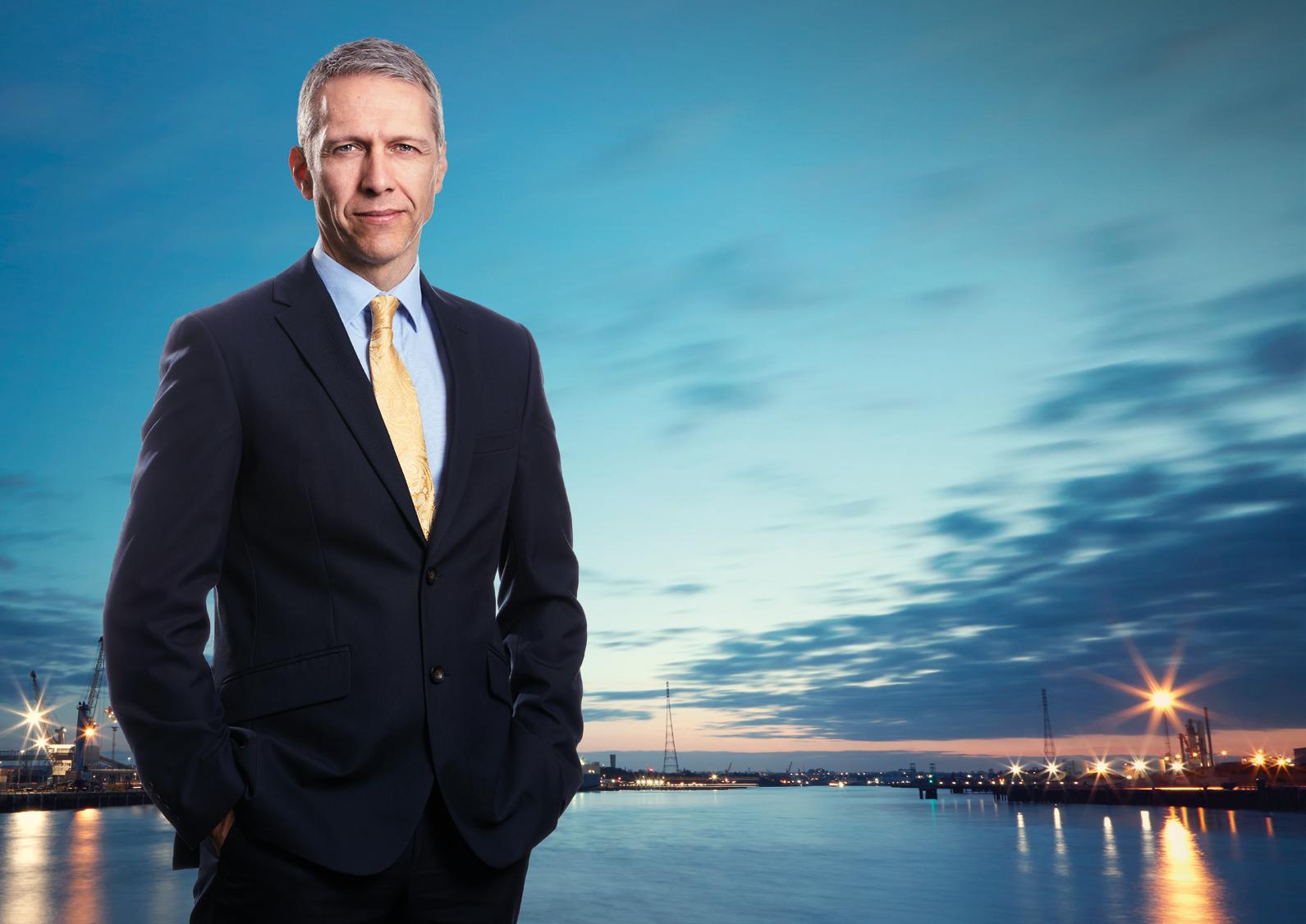
4 minute read
Welcome from the Chair
from Tyne 2050
by Port of Tyne

& HELLO
Advertisement
It’s been 18 months since we launched Tyne 2050, our vision for the Port and an opportunity to redefine ourselves in the face of a number of new social, market and environmental challenges.
The Port has a clear vision for the future – one that balances its role as a key facilitator of business, a world leader in collaboration and technology, an innovator of environmental sustainability and an engine for long term economic prosperity and job creation within the wider region and, indeed, nationally. As a major Trust Port we are, perhaps uniquely, able to work for the benefit of both our industry and the region as a whole. The Port’s Tyne 2050 strategy is representative of our changing times - and we’ve certainly experienced times of unprecedented change this year. New global challenges and opportunities have emphasised the need for us to be dynamic, efficient and effective in order to achieve our growth plans. The world in which we operate is constantly evolving and we need to keep pace with our changing environment. Our Tyne 2050 projects are more important now than ever and we’ve adapted to new challenges by reviewing, refreshing and reorganising the projects based on what we’ve learnt throughout the year. Due to the Covid-19 pandemic we had to pause some projects and extend some timelines whilst other projects were accelerated to meet our requirements or respond to changing markets. The Port of Tyne is perfectly placed to attract businesses from the growing offshore renewables market. In 2020, we secured investment from Equinor / SSE to become its base for the world’s largest wind farm, Dogger Bank, bringing an expected 200 direct jobs with many more in the supply chain and estimated capital investment of £9bn to the North East. Our clean energy mission and supporting Tyne 2050 projects have clearly never been as relevant as they are now. We have ambitious plans to become a test bed for green innovation by 2025 and fully carbon neutral by 2030. Our 2020 achievements for clean energy include converting diesel powered assets to electric, launching the UK’s only mobile harbour crane fully converted to electric and switching to LED lighting saving 2 million KWh+. Our 2050 Maritime Innovation Hub will celebrate its second anniversary this year. Since it’s launch, over 60 events have been delivered to 2000+ people from over 350 companies providing innovative solutions for operational challenges identified through hackathons and collaborative engagement with businesses including other ports. Over the last 18 months, the team have worked with innovative companies to review, implement and test new technology such as wireless predictive maintenance, AI for operational efficiency and smart berthing tools. I look forward to building on this success during the year ahead.
Matt Beeton
Chief Executive Officer
INTRODUCTION
The Port of Tyne aspires to be one of the most innovative, progressive and efficient deep-sea ports in the UK linking the North to the rest of the world.
As a Trust Port, we receive no Government funding, are run on a commercial basis and reinvest all profits back into the business for the benefit of all of our stakeholders who are customers, employees, business, Government and the community. The Port of Tyne is one of only two deep-sea ports in the North East, operating in numerous bulk sectors, energy (including biomass and offshore), rail-freight, automotive logistics, cruise and ferry, and port centric logistics. We also have a portfolio of world-class commercial properties and offer unrivalled agility, security and flexibility for shippers, manufacturers and retailers. We’re fully integrated into the wider northern infrastructure with direct links to major roads, rail and airports. The Port is the gateway to the North, facilitating trade through the River Tyne and beyond into the wider northern hinterland. We are a catalyst for growth in the whole of the region, supporting over 9,300 jobs and contributing £557m gross value to the economy. Our customers support hundreds of thousands of jobs both directly and through the wider supply chain. The Port is also the Statutory Harbour Authority for 17 miles of the River Tyne and is committed to ensuring the safety of navigation for all river users - commercial, fishing and leisure - and to maintaining, developing and improving the river for the benefit of current users and future generations. In addition, Port of Tyne provides Vessel Traffic Services (VTS), pilotage, surveying and dredging services, all vital parts of our role in overseeing the safety of navigation and protecting the environment on the river. The Port is recognised as the primary east coast place of refuge and our pilotage service is one of only three in the whole of the UK to be accredited to the International Standards for Pilotage Organisations. The Tyne hosts many sector specific supply chain organisations for advanced manufacturing, technology, energy and tourism and we are committed to the wider success of the region.
The Port of Tyne is an ideal site for offshore activities. It has approximately 200 acres of readily available land, deep water, lock-free access, a mature logistics and transport infrastructure, plus close proximity to available seabed sites including Dogger Bank, Sofia and Seagreen. 83% of the world’s largest cargo ships can be accommodated at the Port of Tyne which can also offer exclusive and restriction free berthing access with no beam limitation.








